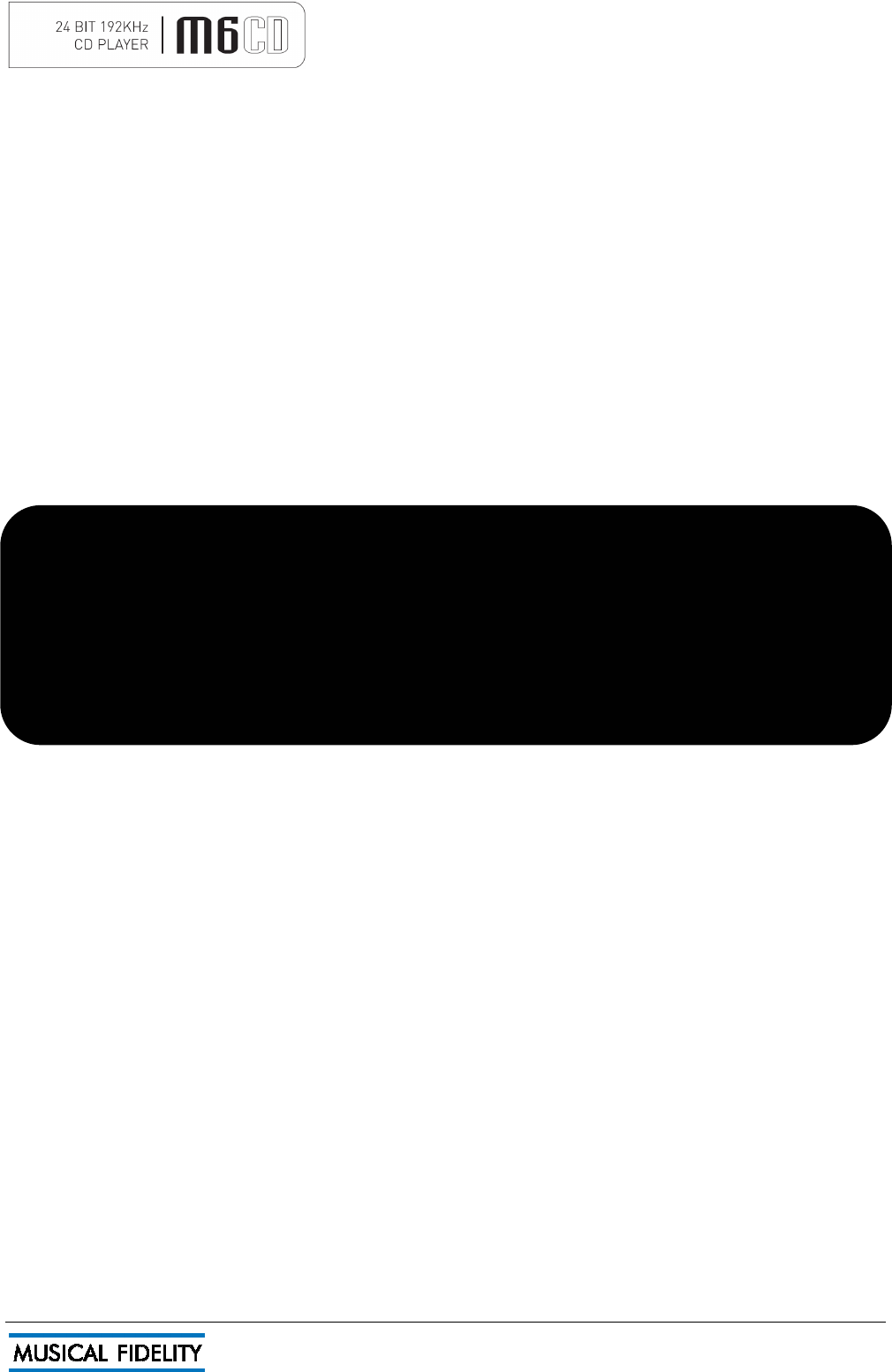
Issue 1 July 2009 Page 7 of 18
Introduction
Congratulations on the purchase of the new M6CD player. This unit will give top quality performance when
used as:
- A top quality CD player delivering the best performance possible from CD
- A top quality DAC (digital to analogue converter) for other sources with digital outputs such as DAB
radio, Minidisc, DAT, TV, etc. delivering the best audio performance using these sources
- A top quality USB DAC for PC or MAC computers delivering unsurpassed musical performance from
any computer audio/music files the computer can play.
Cleaning
Before cleaning the unit, switch off power at the mains switch and remove the mains plug from the wall socket.
Clean the cabinet and remote control unit using a moist cloth. Using solvents, white spirit or thinners is not
advised, as they could damage the surface finish.
Installation
Position the M6CD on a stable, horizontal surface where there is no risk of it being knocked, or subjected to
vibration such as from loudspeakers.
Important note:
In normal operation, the unit dissipates a small quantity of power at all times, and it is important
that it is adequately ventilated. The top and bottom are perforated to allow the smooth flow of heat
through the unit. It is therefore not recommended that the unit is enclosed in a cabinet or placed
where the ventilation holes are impeded as this could result in excessive heat build-up.
The M6CD must be protected from humidity – if the unit is moved from a cold place to a warm
room, leave the unit for an hour or so to allow sufficient time for the moisture to evaporate.
Power Connections
The M6CD is supplied with a standard IEC mains cable which plugs into the IEC socket at the back of the unit
Audio Connections
XLR audio outputs: Use good quality XLR balanced audio cables (fully connected signals and ground), for
optimum signal transfer. This gives the best performance from the CD player when used in conjunction with an
amplifier with fully balanced input such as the Musical Fidelity M6i Integrated.
RCA audio outputs: Use good quality RCA phono audio cables (fully connected signal and ground), for
optimum signal transfer.
Digital Connections
RCA digital (SP/DIF) input: Connect RCA digital sources to RCA digital inputs. Use good quality fully
connected (signal and ground) coaxial digital cables for optimum RCA digital signal transfer.
Optical (TOSLINK) input: Connect optical digital source to optical input. Use good quality “Toslink” cables, for
optimum signal transfer.
USB (type “B”) input: Connect USB digital source (such as computer, PDA etc.) to USB input. Use good
quality USB 2.0 cable, for optimum signal transfer.
RCA digital (SP/DIF) output: Connect RCA digital receiver to RCA digital outputs. Use good quality fully
connected (signal and ground) coaxial digital cables for optimum RCA digital signal transfer.
Optical (TOSLINK) output: Connect optical digital receiver to optical output. Use good quality “Toslink” cables,
for optimum signal transfer.
INSTALLATION


















